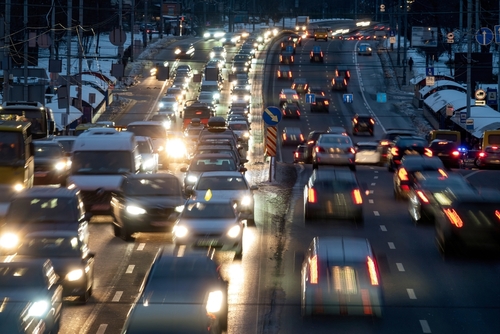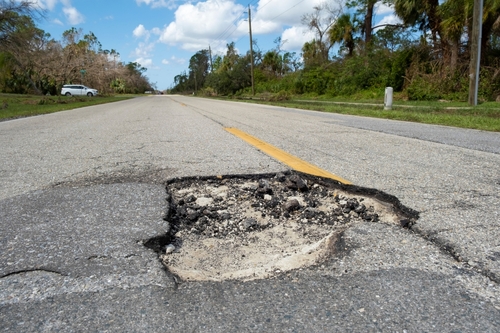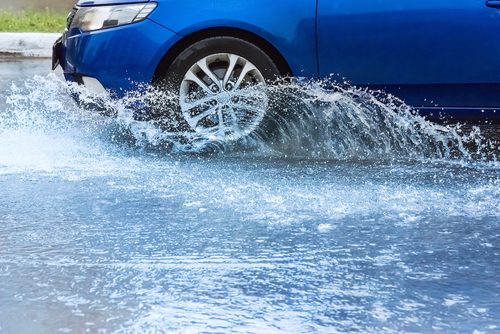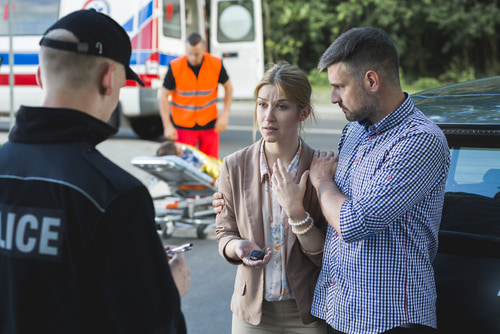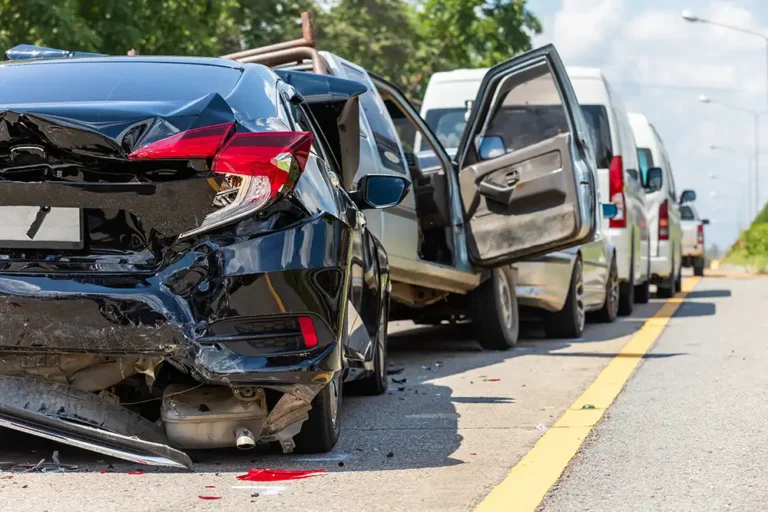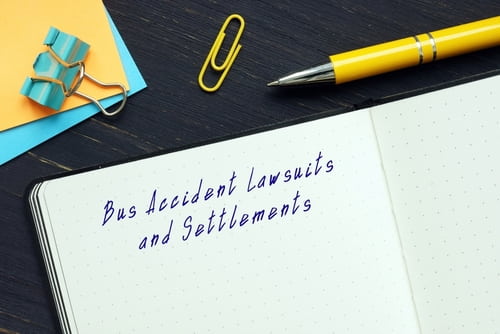Navigating the bustling streets of Atlanta requires more than just a keen sense of direction; it demands an understanding of the most dangerous roads in Atlanta by a skilled car accident lawyer. As seasoned experts in traffic safety and legal advocacy, our firm has been at the forefront of assisting accident victims in this region. With a deep knowledge of the local landscape and a commitment to public safety, we provide invaluable insights into the challenges posed by Atlanta’s roads and the legal recourse available to those affected by accidents.
Overview of Traffic Safety in Atlanta
Atlanta struggles with traffic safety, facing challenges that lead to a high number of accidents. The crash statistics in Atlanta reveal a troubling trend, with Atlanta road crashes often involving rear-end and sideswipe traffic collisions with injuries caused by distracted driving. The city often reports higher accident rates compared to both national and state averages. In recent years, Atlanta has seen thousands of accidents annually, resulting in many injuries and fatalities.
Atlanta’s Crash Statistics Compared to National and State Averages
The Atlanta metro area consistently ranks among the most dangerous places for drivers and pedestrians in Georgia. According to the Georgia Department of Transportation, the number of traffic accidents in Atlanta exceeds the state average. This alarming trend highlights the urgent need for improved safety measures.
Annual Accidents, Injuries, and Fatalities in the Metro Area
Each year, Atlanta experiences thousands of traffic accidents. Car accidents happen frequently in specific locations such as Augusta and Atlanta, GA, where analyzing where and how these incidents occur is crucial. These incidents lead to severe injuries and fatalities, affecting families and communities. In 2022 alone, there were over 30,000 reported accidents in the Atlanta metro area. Many of these accidents resulted in serious injuries, including broken bones, head trauma, and spinal injuries. Tragically, the number of fatalities continues to rise, making it clear that urgent action is needed to improve road safety.
Understanding the gravity of these statistics is essential for all drivers in Atlanta. Awareness of the dangers can lead to safer driving practices and ultimately save lives.
Most Dangerous Roads and Highways in Atlanta Metro
Atlanta’s dangerous highways present unique challenges for drivers, with specific roadways identified as high-risk locations for accidents and fatalities. Certain roads are notorious for their high accident rates and severe injuries. Understanding these dangerous roads in Atlanta Metro can help drivers stay alert and safe.
Moreland Avenue (Georgia State Route 42)
Moreland Avenue is a significant route in Atlanta that sees a high volume of traffic. It has many intersections and is prone to accidents, particularly due to frequent lane changes and distracted driving. The combination of heavy traffic and aggressive driving behaviors increases the risk of collisions.
Interstate 285 (I-285)
Interstate 285, often referred to as Atlanta’s “Circle of Death,” is infamous for its dangerous conditions. This highway encircles the city and experiences heavy congestion. The numerous exits and interchanges contribute to a high number of crashes, especially during rush hours.
Interstate 20 (I-20)
Interstate 20 serves as a major east-west route through Atlanta. The area near Panola Road is particularly hazardous. Drivers often face sudden stops and merges, leading to rear-end collisions and sideswipe accidents.
Georgia Highway 85
Georgia Highway 85 runs between I-75 and Springdale Drive. This stretch is known for high-speed traffic and limited visibility. The combination of these factors makes it a hotspot for accidents, especially during peak travel times.
U.S. Route 78 (Stone Mountain Freeway)
U.S. Route 78, also known as the Stone Mountain Freeway, is another road with a dangerous reputation. It experiences heavy traffic and has areas with sharp curves. These conditions increase the likelihood of serious accidents, particularly for drivers unfamiliar with the road.
Buford Highway
Buford Highway is a crucial corridor for both vehicles and pedestrians. This road has a high rate of pedestrian accidents due to its busy nature. Drivers need to be especially cautious, as pedestrians often cross in unexpected areas.
Understanding these dangerous roads can help drivers adopt safer driving practices. Awareness of the risks associated with these routes is essential for reducing accidents and injuries in the Atlanta metro area.
Factors Contributing to Road Dangers
Atlanta’s roads present various challenges that contribute to accident risks. Understanding these factors can help drivers stay alert and make safer choices.
Heavy Traffic and Congestion
Heavy traffic is a significant factor in Atlanta’s road dangers. During rush hours, the volume of vehicles increases dramatically. This congestion raises the likelihood of collisions. Drivers may feel rushed, leading to impatience and reckless behavior. The combination of many cars and limited space creates a perfect storm for accidents.
Distracted Driving and Its Impact
Distracted driving is another major concern. Many drivers use their phones while on the road, whether for texting, calling, or using apps. This distraction diverts attention from the road, increasing the risk of crashes. According to statistics, distracted driving contributes to a large percentage of accidents in the Atlanta metro area.
Speeding and Aggressive Driving Behaviors
Speeding is common on Atlanta’s highways. Drivers often exceed the speed limit, especially on major routes like Interstate 285 and Georgia Highway 85. Faster vehicles collide with greater force, leading to more severe injuries and fatalities. Aggressive driving behaviors, such as tailgating and weaving through traffic, also heighten the risk of accidents.
Drunk Driving Incidents
Drunk driving remains a persistent issue in Atlanta. Alcohol impairs judgment and slows reaction times. This dangerous combination leads to many accidents, especially late at night and during weekends. Law enforcement efforts are ongoing to combat this problem, but it continues to pose a significant threat on the roads.
Poor Road Conditions and Infrastructure Challenges
Poor road conditions contribute significantly to the dangers in Atlanta. Sharp curves, narrow lanes, and limited visibility make it difficult for drivers to react to hazards. Potholes and uneven surfaces can also lead to loss of vehicle control. Infrastructure challenges, such as inadequate signage and traffic signals, further complicate safe driving.
By recognizing these factors, drivers can better prepare for the risks they face on Atlanta’s roads. Staying aware and practicing safe driving habits can help reduce the likelihood of accidents.
High-Risk Areas and Intersections
Atlanta is home to several high-risk areas and intersections that pose significant dangers to drivers and pedestrians alike. Understanding these locations can help motorists navigate the city more safely and avoid potential accidents. Here are some of the most perilous stretches and interchanges in the Atlanta metro area.
Specific Stretches of Dangerous Roads in Atlanta Metro
- Moreland Avenue: This road is notorious for its high volume of traffic and frequent accidents. The intersections along Moreland Avenue, particularly near shopping centers, often see collisions due to distracted driving and aggressive maneuvers.
- Interstate 285 (I-285): Known for its heavy congestion, I-285 has several stretches where accidents frequently occur. The area near the Camp Creek Parkway exit is particularly dangerous, with many drivers merging and changing lanes rapidly.
- Georgia Highway 85: This highway sees a high number of accidents, especially between I-75 and Springdale Drive. Poor lighting and limited visibility contribute to the risks faced by drivers on this stretch.
- Buford Highway: This road is heavily trafficked and has a high incidence of pedestrian accidents. The mix of vehicles and foot traffic creates a hazardous environment, especially near commercial areas.
Accident-Prone Interchanges and Exits
- I-20 and Panola Road: This interchange is a hotspot for accidents, particularly during rush hour. The merging traffic from I-20 creates a chaotic situation that often leads to collisions.
- I-285 and I-85: This interchange is one of the busiest in Atlanta and frequently experiences heavy traffic. The complex merging patterns can confuse drivers, leading to sideswipe and rear-end collisions.
- I-75 and Northside Drive: This area sees a high volume of traffic and a significant number of accidents. The proximity to major businesses and attractions increases the risk of crashes as drivers navigate through the busy intersection.
By being aware of these high-risk areas and intersections, drivers can take extra precautions to stay safe. Increased vigilance and defensive driving techniques are essential when navigating these dangerous roads in the Atlanta metro area.
Types of Accidents Common on Atlanta’s Dangerous Roads
Atlanta’s roads are notorious for various types of accidents. Understanding these common incidents can help drivers stay vigilant and reduce their risk of being involved in a collision.
Multi-Vehicle Collisions
Multi-vehicle collisions are frequent on Atlanta’s busy highways. These accidents often occur during rush hour when traffic congestion is high. When one vehicle brakes suddenly, it can lead to a chain reaction, causing multiple cars to collide. The severity of these accidents can result in significant injuries and extensive property damage.
Pedestrian and Bicycle Accidents
Pedestrian and bicycle accidents are also a major concern in Atlanta. Many roads, like Buford Highway, have high traffic volumes and limited crosswalks. Drivers may not always be aware of pedestrians or cyclists, leading to dangerous situations. These accidents often result in serious injuries for those on foot or on bikes, as they lack the protection that vehicles provide.
Single-Vehicle Crashes
Single-vehicle crashes occur when a driver loses control of their vehicle and crashes into a barrier, tree, or other obstacles. Factors such as speeding, distracted driving, or adverse weather conditions contribute to these accidents. In Atlanta, the sharp curves and narrow lanes on certain roads can increase the likelihood of single-vehicle crashes.
By recognizing these common types of accidents, drivers can take proactive measures to stay safe on Atlanta’s dangerous roads. Awareness and caution are key in preventing accidents and protecting both drivers and pedestrians alike.
Impact of Accidents
Car accidents on Atlanta’s dangerous roads have serious consequences. The statistics reveal a grim reality for those involved in these incidents.
Fatality Rates and Severe Injury Statistics
In Atlanta, the fatality rate from car accidents is higher than the national average. Many accidents result in severe injuries that can lead to long-term disabilities. Common severe injuries include traumatic brain injuries, spinal cord injuries, and fractures. These injuries not only affect the victims physically but also impact their quality of life.
Economic Costs of Crashes
The economic impact of car accidents in Atlanta is substantial. Medical expenses can quickly accumulate, burdening victims and their families. Hospital bills, rehabilitation costs, and ongoing medical care can lead to financial strain. Additionally, victims may face lost wages due to an inability to work during recovery.
Insurance claims can also be complicated and lengthy, adding to the stress. Insurance companies may attempt to minimize payouts, leaving victims undercompensated for their losses.
In summary, the impact of accidents on Atlanta’s roads extends beyond physical injuries. It encompasses emotional, social, and financial challenges for victims and their families. Understanding these impacts emphasizes the importance of road safety and the need for legal support in the aftermath of a crash.
Safety Measures and Initiatives
Improving road safety in the Atlanta metro area is a priority for local and state officials. Various initiatives aim to reduce accidents and enhance driver awareness. Here are some key safety measures in place:
Local and State Efforts to Improve Road Safety
The Georgia Department of Transportation (GDOT) actively works to enhance road conditions. They focus on upgrading traffic signals, improving signage, and maintaining road surfaces. These efforts help reduce hazards that contribute to accidents.
Additionally, local governments often collaborate with community organizations to promote safe driving campaigns. These campaigns aim to educate drivers about the dangers of distracted driving, speeding, and driving under the influence.
Law Enforcement Strategies
Law enforcement agencies in the Atlanta metro area implement various strategies to ensure road safety. DUI checkpoints are a common practice, especially during holidays and weekends. These checkpoints aim to deter drunk driving and catch offenders before they cause accidents.
Increased patrols during peak traffic hours also help promote safe driving behavior. Officers monitor high-risk areas and enforce traffic laws strictly. This presence can discourage aggressive driving and encourage compliance with speed limits.
Community Engagement Programs
Community programs play a vital role in promoting road safety. Schools and local organizations often host events to raise awareness about safe driving practices. These programs educate young drivers about the importance of defensive driving and the risks associated with reckless behavior.
Additionally, partnerships with local businesses can foster a culture of safety. Businesses may offer incentives for safe driving practices among employees, further promoting responsible behavior on the roads.
By combining these efforts, the Atlanta metro area strives to create safer roads for all users, including motorists, pedestrians, and cyclists. These initiatives reflect a commitment to reducing accidents and enhancing overall traffic safety.
Tips for Safe Driving in Atlanta
Driving in Atlanta can be challenging due to heavy traffic and dangerous roads in Atlanta Metro. Here are practical tips to help you stay safe on the road.
Defensive Driving Techniques and Avoiding Distractions
Defensive driving means being aware of your surroundings and anticipating the actions of other drivers. Here are some key techniques:
- Maintain a Safe Following Distance: Keep a safe distance from the vehicle in front of you. This gives you more time to react to sudden stops or emergencies.
- Stay Alert: Avoid distractions like texting or using your phone. Focus on the road and your surroundings.
- Use Turn Signals: Always signal your intentions to other drivers. This helps prevent misunderstandings and accidents.
Strategies for Avoiding Peak Traffic Hours
Traffic congestion increases the risk of accidents. To minimize your time on the road, consider these strategies:
- Plan Your Trips Wisely: Try to travel during off-peak hours. Early mornings or late evenings generally have less traffic.
- Use Traffic Apps: Utilize navigation apps that provide real-time traffic updates. These can help you avoid congested areas and find quicker routes.
Utilizing Alternative Routes to Reduce Risk
Sometimes, taking a less direct route can lead to a safer journey. Here are some suggestions:
- Explore Side Streets: Major highways can be dangerous due to high speeds and heavy traffic. Use side streets when possible to avoid high-risk areas.
- Know Your Alternatives: Familiarize yourself with alternative routes to your common destinations. This knowledge can help you avoid dangerous roads in Atlanta Metro when needed.
By applying these tips, you can enhance your safety while driving in Atlanta. Being proactive and aware can significantly reduce your risk of accidents on the road.
Legal Aspects
Understanding the legal landscape surrounding car accidents in Atlanta is crucial for victims seeking justice. Georgia’s traffic laws play a significant role in determining fault and compensation.
Overview of Georgia Traffic Laws
Georgia operates under a modified comparative negligence system. This means that if you are less than 50% at fault for an accident, you can recover damages. However, your compensation will be reduced by your percentage of fault. For example, if you are found to be 20% at fault for your accident, your compensation will be reduced by that amount.
Importance of Contacting Atlanta Car Accident Lawyers After a Crash
After a car accident, it is essential to consult with an experienced Atlanta car accident lawyer. They can help you navigate the complexities of Georgia law and ensure that your rights are protected. A lawyer will gather evidence, negotiate with insurance companies, and advocate for your best interests. This support is crucial, especially when dealing with large insurance companies that may attempt to minimize your claim. Take advantage of a free consultation to understand your rights and the compensation you may be entitled to under the law.
Pursuing Compensation for Accident Victims Through Personal Injury Claims
Victims of car accidents have the right to pursue compensation for various damages. These may include medical bills, lost wages, pain and suffering, and property damage. To successfully file a personal injury claim, you must establish that the other driver was at fault and that their negligence caused your injuries. Documentation, such as police reports and medical records, will be vital in supporting your claim.
In summary, understanding Georgia traffic laws, seeking legal help promptly, and knowing how to pursue compensation are critical steps for anyone involved in a car accident in Atlanta. Taking these steps can significantly impact the outcome of your case and help you recover from your injuries.
Future Outlook
Projected Population Growth and Its Impact on Traffic
Atlanta’s population is expected to continue growing in the coming years. This growth will likely increase traffic volume on already congested roads. More vehicles on the road can lead to a higher risk of car accidents. As the population expands, residents and local officials must prioritize traffic safety measures to protect drivers and pedestrians alike.
Planned Infrastructure Improvements to Enhance Road Safety
Local and state governments are actively working on infrastructure improvements to enhance road safety. These improvements include:
- Upgrading traffic signals and signage to improve visibility.
- Expanding roadways to alleviate congestion during peak hours.
- Implementing better pedestrian crossings to protect walkers and cyclists.
- Enhancing road maintenance to address potholes and surface issues.
These initiatives aim to create safer driving conditions and reduce the number of accidents on Atlanta’s dangerous roads. By investing in infrastructure, the city can foster a safer environment for all road users.
Staying informed about these changes is vital for residents. Understanding the ongoing efforts can help drivers navigate Atlanta’s roads more safely and responsibly.
Conclusion
Driving in the Atlanta metro area presents unique challenges. The roads here are known for their dangers, including heavy traffic, distracted driving, and poor road conditions. Understanding the most dangerous roads in Atlanta Metro, such as Moreland Avenue and I-285, is crucial for all drivers. Awareness of high-risk areas and common accident types can help reduce the likelihood of collisions.
Accidents on these roads can lead to severe injuries and fatalities, placing a heavy burden on victims and their families. The economic impact of these accidents is significant, with medical bills and insurance claims adding to the stress. Local authorities are working to improve road safety through various initiatives. However, drivers must also take responsibility by practicing defensive driving techniques and avoiding distractions.
If you or a loved one has been involved in a car accident in the Atlanta area, it is essential to seek help. Contacting a professional Atlanta car accident lawyer like Horst Shewmaker Personal Injury Trial Attorneys can provide valuable guidance and support.
They can assist you in pursuing compensation for your injuries and losses. Don’t hesitate to contact us for a free legal consultation. Understanding your rights is the first step toward recovery (404) 400-1175
